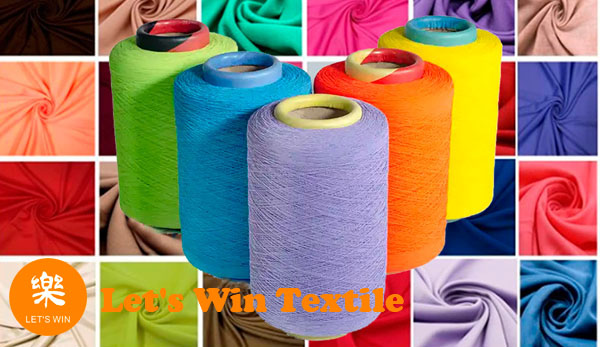Jersey, Pique, Lacoste, terry, and French terry are the most common and popular single jersey fabrics. Rib, Interlock, French Rib. By applying different finishing methods, using different yarn counts, yarn types and adjusting different knitting techniques and tensions, we can meet different customer requirements and styles of fabrics, such as hand feel, physical properties and various functions.

Spandex stretch jersey (Elastic Jersey)
Stretch spandex jersey is a special interwoven jersey, which is a structure in which spandex or Dupont Lycra yarn and another yarn such as cotton or polyester are knitted into loops at the same time.
Yarn strength: The strength of yarn is the most important factor in determining the fabric, so the yarn count, single yarn and ply are very important.
Spandex fabric
Usually spandex has: 20D, 30D , 40D , 70D
Core yarn: Cotton is the surface, and the core is spandex, such as 40sX70D cotton-wrapped spandex yarn.
Spandex fabrics require presetting to improve creases and stability.
Spandex can be applied to these fabrics: jersey and single piqué, ribbed and single jersey.
These fabrics cannot use spandex: slub yarn and high twist yarn fabrics, double sweaters, hanger fabrics.
structural impact
Jersey, single and double piqué, and all single jersey tend to twist. This can be improved by adjusting the finishing and yarn usage.
Influence of Yarn Parameters
The greater the twist, the greater the twist, so single jersey fabrics with high twist show more twist.
Single and plied yarns and double yarns
Single yarn shows a greater tendency to skew, especially for high-count fabrics, such as 50s/1 single jersey.
Using strands like 60s/2 can reduce the degree of twisting and potential problems; but the twisting of 60s/2 high-twisted yarn fabrics is still very large, which is mainly due to the high twist of the yarns and the twisting direction of the strands. Cannot be offset up to the level of 60s/1.
Comparing single yarn and ply fabrics, double yarn fabrics show the most severe twisting problems, such as 16s/1x2 single jersey.


 +86-13500092058
+86-13500092058
 E-mail
E-mail
